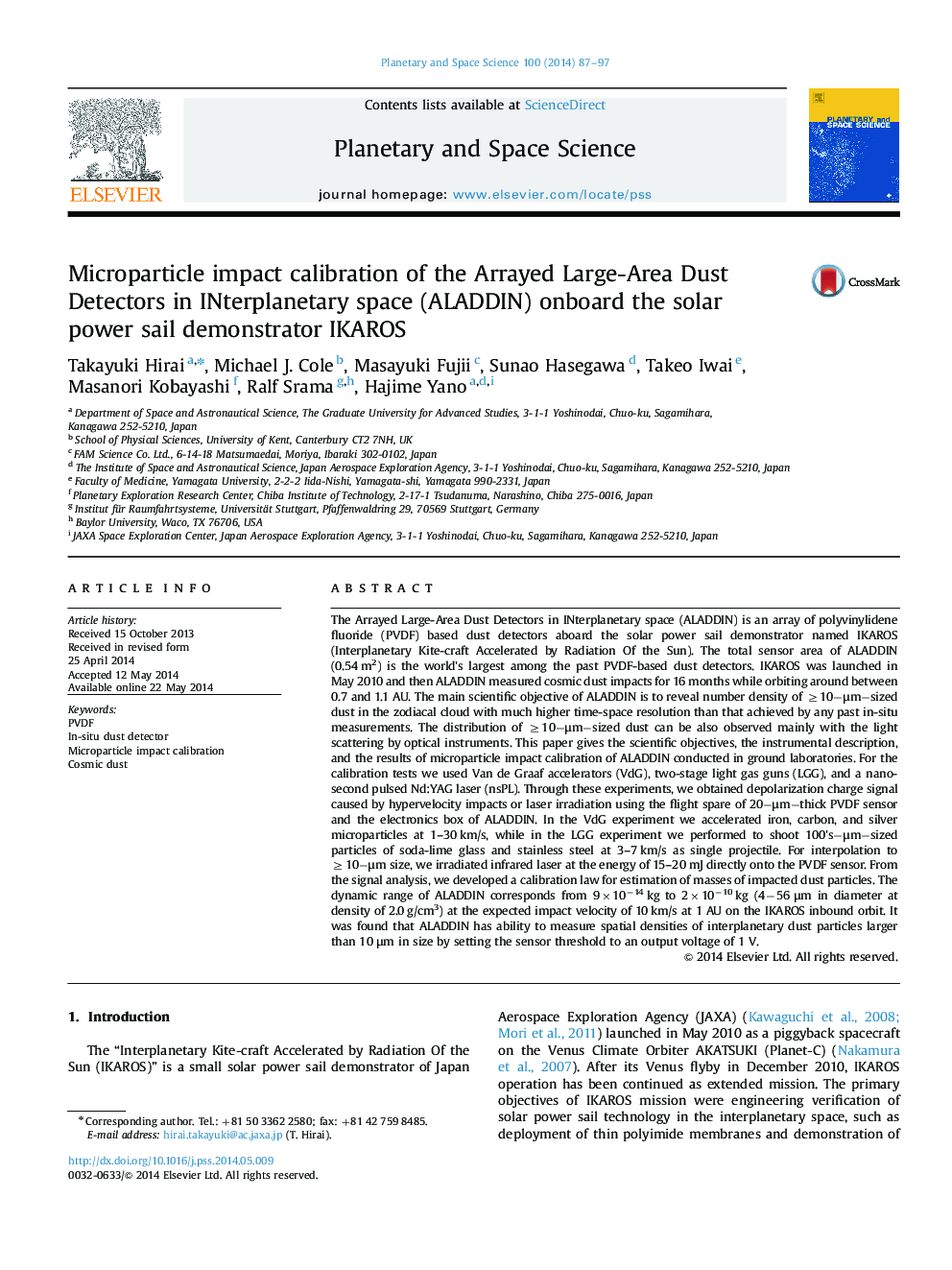| کد مقاله | کد نشریه | سال انتشار | مقاله انگلیسی | نسخه تمام متن |
|---|---|---|---|---|
| 1781113 | 1523937 | 2014 | 11 صفحه PDF | دانلود رایگان |

• The ALADDIN is world׳s largest PVDF-based in-situ dust detector onboard the IKAROS solar sail.
• The ALADDIN was calibrated by using hypervelocity microparticle impacts and pulsed laser irradiation.
• The ALADDIN can effectively measure >10-μm-sized>10-μm-sized dust distribution in interplanetary space.
The Arrayed Large-Area Dust Detectors in INterplanetary space (ALADDIN) is an array of polyvinylidene fluoride (PVDF) based dust detectors aboard the solar power sail demonstrator named IKAROS (Interplanetary Kite-craft Accelerated by Radiation Of the Sun). The total sensor area of ALADDIN (0.54 m2) is the world׳s largest among the past PVDF-based dust detectors. IKAROS was launched in May 2010 and then ALADDIN measured cosmic dust impacts for 16 months while orbiting around between 0.7 and 1.1 AU. The main scientific objective of ALADDIN is to reveal number density of ≥10-μm-sized≥10-μm-sized dust in the zodiacal cloud with much higher time-space resolution than that achieved by any past in-situ measurements. The distribution of ≥10-μm-sized≥10-μm-sized dust can be also observed mainly with the light scattering by optical instruments. This paper gives the scientific objectives, the instrumental description, and the results of microparticle impact calibration of ALADDIN conducted in ground laboratories. For the calibration tests we used Van de Graaf accelerators (VdG), two-stage light gas guns (LGG), and a nano-second pulsed Nd:YAG laser (nsPL). Through these experiments, we obtained depolarization charge signal caused by hypervelocity impacts or laser irradiation using the flight spare of 20-μm-thick20-μm-thick PVDF sensor and the electronics box of ALADDIN. In the VdG experiment we accelerated iron, carbon, and silver microparticles at 1–30 km/s, while in the LGG experiment we performed to shoot 100׳s-μm-sized100׳s-μm-sized particles of soda-lime glass and stainless steel at 3–7 km/s as single projectile. For interpolation to ≥10-μm≥10-μm size, we irradiated infrared laser at the energy of 15–20 mJ directly onto the PVDF sensor. From the signal analysis, we developed a calibration law for estimation of masses of impacted dust particles. The dynamic range of ALADDIN corresponds from 9×10−14 kg to 2×10−10 kg (4−56μm in diameter at density of 2.0 g/cm3) at the expected impact velocity of 10 km/s at 1 AU on the IKAROS inbound orbit. It was found that ALADDIN has ability to measure spatial densities of interplanetary dust particles larger than 10μm in size by setting the sensor threshold to an output voltage of 1 V.
Journal: Planetary and Space Science - Volume 100, 1 October 2014, Pages 87–97